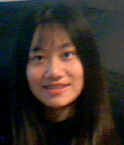Friday, January 12, 2023 at 10am
Defense of doctoral thesis of
Jingwen ZHANG, for the University Grenoble Alpes, speciality
" OPTIC & RADIOFREQUENCIES "
Keywords :
Millimeter,Low-cost,Air-filled SIW
Abstract :
Waveguide technology and printed circuit board (PCB) technology are two milestones in the engineering history of microwave technology. Waveguides are at the origin of different types of passive devices such as antennas or filters while PCB technology has made it possible to integrate today's active components such as amplifiers or mixers on very small volumes. Passive components based on waveguide technology have advantages such as low insertion losses, high power handling capability and auto-blind. Substrate-integrated waveguide (SIW) technology proposed in the early 2000s reduced the size of volume waveguides by combining two technologies: metallic waveguides and PCBs. It allows for relatively low insertion losses, auto-blind and small dimensions. The introduction of SIW technology simplifies the integration of passive waveguide-based devices with active PCB-based devices. To further optimize its performance, SIW technology has evolved with the introduction in 2014 of the air-filled substrate integrated waveguide (AFSIW). The cavity placed inside the AFSIW significantly reduces dielectric losses. Since 2014, this technology has been applied to the design of various passive devices such as filters, antennas or phase shifters.
These devices are individually designed on a single plane and their connections to each other to design a system, such as a radio frequency transmitter or receiver which requires the association of several components, is also done on the same plane. However, the multilayer structure of AFSIW offers new possibilities for designing these systems using its lower and upper layers. Components can be stacked and connected using vertical transitions. The work of this thesis exploits the multilayer structure of AFSIW to “verticalize” a system. The use of the lower and upper layers is studied on the one hand for the connection of the different components of a system and on the other hand for the design of components individually.
For connecting different components, most of the transitions between SIW, AFSIW and various microstrip lines are made on the same plane but this significantly increases the circuit length. On the contrary, the transition between the AFSIW cavity and the micro strip line proposed in this thesis can be used to achieve the superposition of passive and active components on the vertical plane using the substrate of the upper layer of the AFSIW allowing to reduce the occupied volume.
For designing individual components, the bottom and top layers of AFSIW are useful for making multi-cavity components such as high-order filters. The coupling between each cavity of a filter classically taking place on the same plane, as the order of the filter increases, its length also increases. The transition between stacked cavities proposed in this thesis offers another possibility for the design of such components in the case where the allocated horizontal space is insufficient.
The overall objective of this thesis is to provide a new possibility for the spatial organization of a radio frequency transceiver. In order to provide a proof of concept, the design of an antenna is also proposed in this thesis leading to a system comprising the assembly: antenna, filter and amplifier. Each component is located on a different layer and the filter's resonant cavities are also positioned on different layers. Compared to the state of the art where the components are connected on the same horizontal plane, the results obtained demonstrate the possibility of connecting components vertically. These two approaches to connecting components (exploiting both the horizontal and vertical plane) thus offer more degrees of freedom for optimal use of 3D space, which is particularly critical for spatial communications due to occupied volume constraints at satellite level.
Jury members:
- Tan Phu VUONG, UNIVERSITY PROFESSOR - Grenoble INP : Supervisor
- Yvan DUROC, UNIVERSITY PROFESSOR - Claude Bernard Lyon 1 University : CoSupervisor
- Ke WU, FULL PROFESSOR - Ecole Polytechnique de Montréal : CoSupervisor
- Anne VILCOT, UNIVERSITY PROFESSOR - Grenoble INP : Examiner
- Anthony GHIOTTO, ASSOCIATE PROFESSOR HDR - Bordeaux INP : Examiner
- Alexandru TAKACS, ASSOCIATE PROFESSOR HDR - Toulouse University : Examiner
- Habiba OUSLIMANI, UNIVERSITY PROFESSOR - Nanterre University Paris 10 : Reviewer
- Philippe LE-THUC, UNIVERSITY PROFESSOR - Côte d’Azur University : Reviewer
Date infos
Friday, January 12, 2023 at 10 am
Location infos
Room M256 PHELMA/MINATEC
3 Parvis Louis Néel, CS 50257, 38016 Grenoble Cedex 1
